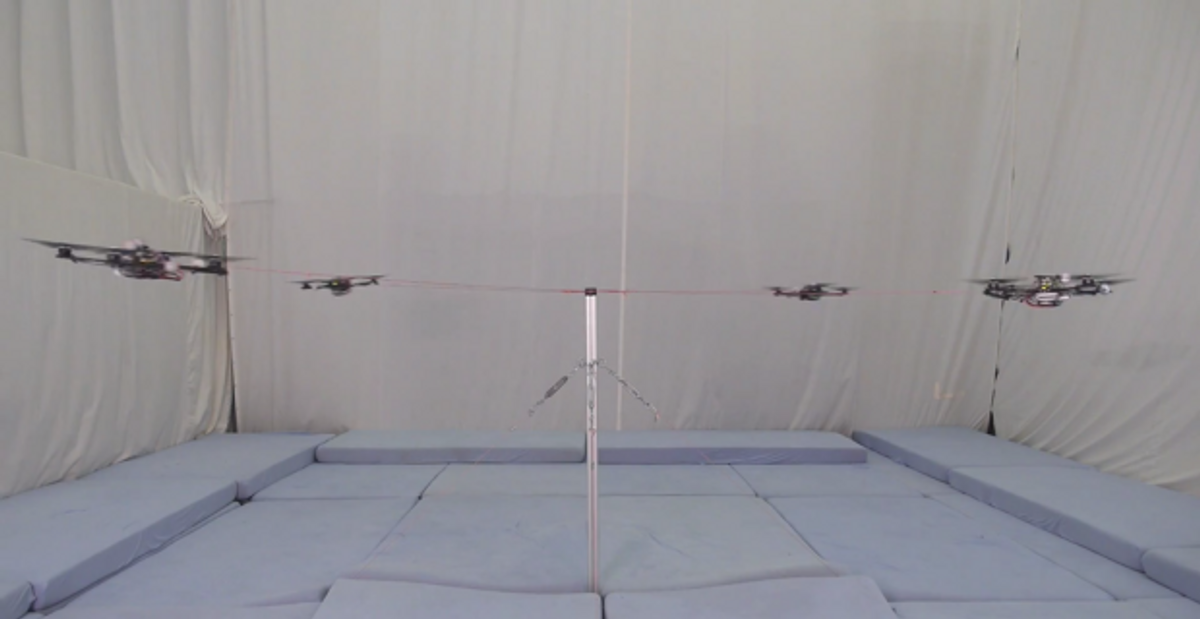Tying a quadcopter to a pole with a piece of rope seems like it defeats the entire point of having a quadcopter in the first place, since you’re preventing it from flying anywhere except in circles around the pole, which sounds boring.
It’s not boring.
You’ll want to watch this.
These quadcopters are topping out at more than 50 kilometers per hour while flying in a circle with a radius of just 1.7 meters. The tether is exerting over 13 gs of centripetal force to keep them from flying off into oblivion. Despite the speed, there seems to be no problem getting four quadcopters to do a bunch of coordinated acrobatics, which is fun (if a bit dizzying) to watch. I had to keep reminding myself that the vid wasn’t sped up.
The reason to do this kind of thing from a research perspective is that it’s the only way (that I can think of) to fly a quadcopter really really fast, or to subject it to a bunch of gravities, in a confined, controlled space. At ETH Zurich, the ability to do this is helping them get familiar with how quadcopters handle at very high speeds, how big of an issue drag is, the efficiency of different propeller designs, and stuff like that. Also, it gives them a chance to practice controlled maneuvering at high speed, including the emergency braking that’s featured in the vid.
All of this is taking place in ETH Zurich’s Flying Machine Arena, and the quadcopters are being very carefully tracked with what is almost certainly a very expensive motion capture system. However, the researchers (led by Maximilian Schulz and Prof. Raffaello D’Andrea) comment that it’s possible to remove the pole completely and let quadcopters attached to each other with strings balance themselves while flying around a single point at high speeds, and that “this could be then used in performance settings, possibly enhanced by light and sound effects.” We’d pay good money for that.
“High-speed, Steady Flight with a Quadrocopter in a Confined Environment Using a Tether” by Maximilian Schulz, Federico Augugliaro, Robin Ritz, and Raffaello D’Andrea, has been submitted to IROS 2015.
[ ETH Zurich ]
Thanks Markus!
Evan Ackerman is a senior editor at IEEE Spectrum. Since 2007, he has written over 6,000 articles on robotics and technology. He has a degree in Martian geology and is excellent at playing bagpipes.



